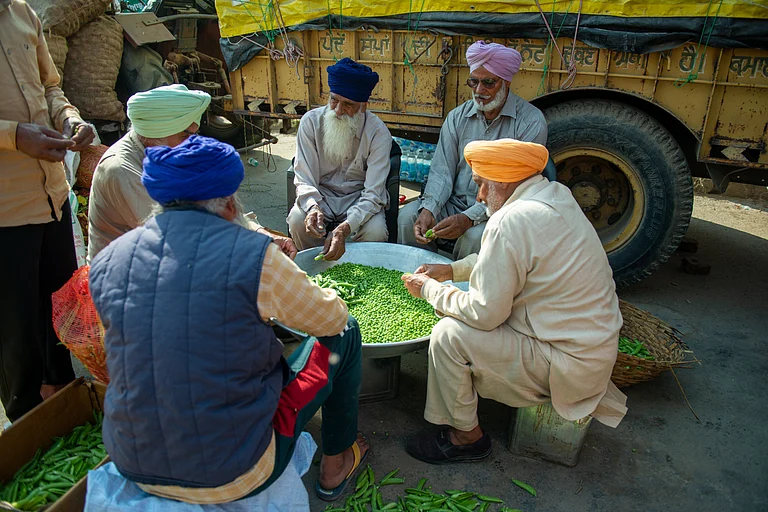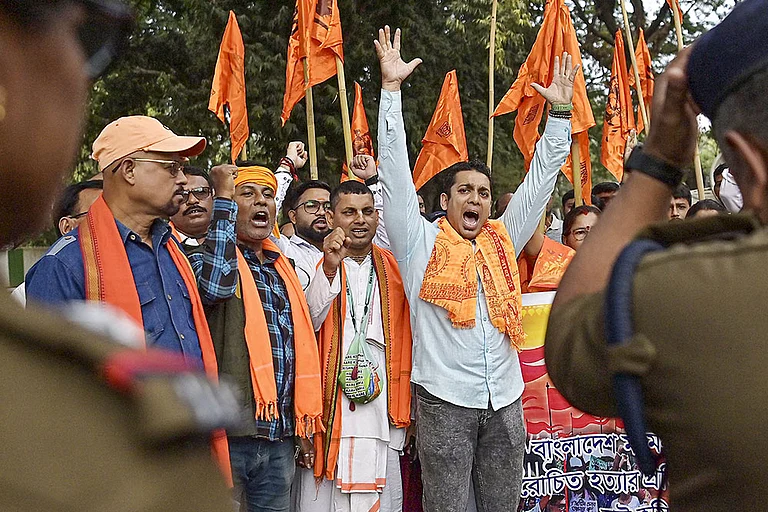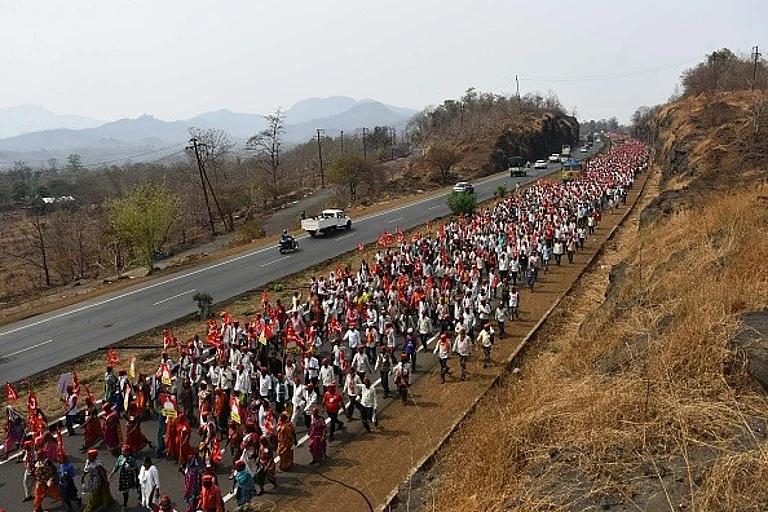The farmers’ protest at the Punjab-Haryana border is set to enter its third week now, with farmers still camped at two points – Shambhu and Khanauri. A 2,000-strong robust central police force prevents them from breaking the barricades using tear gas, water cannons, and other firearms. Meanwhile, the farmers remain determined to fight on with unique weapons of defence, including kites, toothpaste, and bulldozers. However, amid the images of men marching with lathis, driving their tractors with their rugged faces, or trying to break the police cordons, women largely go unnoticed.
During the 2020-21 protest, the overwhelming presence and active participation of women, who came together in large groups, played a key role in repealing the three contentious farm laws. Women are visible at the farmers’ protest this time too, although fewer.
Sheltered away under the tarpaulin-covered tractors, a small group of women sit steadfast in their support for the farmers at Shambhu. One could spot them mass-raising slogans and waving fists in the daytime. Most have their heads covered and it is usually the older women who take the mic while speaking to the media. These women have been camping since February 11, too, and they remain determined to continue to fight against all odds.
“As women, there are challenges of living under open sky for days. It is also in our culture to be clean but it becomes a challenge sometimes (to get privacy),” says 48-year-old Manjeet Kaur. While the men at the protest turn barrels into geysers for hot water and take baths on the streets, women have to travel long distances to find a secluded space to bathe. “But we have come here leaving our families and children at home to protest against police brutality and raise our demands for MSP. We will stay here and keep fighting just like last time,” she adds.

Women play a crucial in the farmers’ protest. They form the backbone of Indian agriculture but often fall prey to patriarchy. Their contributions to farming are often overlooked as part of their household responsibilities. Moreover, deep-rooted cultural practices continue to favour male inheritance and ownership. According to an Oxfam India report, although about 85 per cent of rural women are involved in agricultural activities, only about 13 per cent of them own land. Most of them are not even given the recognition of a ‘farmer’.
Many women have also made their presence felt without being at the Shambhu barrier. About 3 km away from the site, at a Gurdwara, about 10-15 women gather every day as early as 5 am to prepare langar. While some langar is prepared at the protest site, a majority of it comes from these villages where women gather in large numbers. They relentlessly prepare food for 10 to 12 hours so that no person goes undernourished while fighting for their rights. “We do whatever we can from here to help our brothers, children who are sitting at the border,” says Surinder Kaur, one of the women preparing langar.
The talks between farmers and the government continue to be deadlocked. The recent death of Shubhkaran Singh, a young farmer protesting at the Khanauri border, has worsened the situation. Singh died on February 21 after being shot in the head, with what the Haryana Police has denied to be a bullet. Another farmer, Darshan Singh (62), succumbed to the injuries from the protest the next day. The deaths have infuriated Punjab’s peasantry, as well as farmers in other states, some of whom were seen burning effigies of the prime minister. Meanwhile, the protesters also took out a candlelight march in solidarity with the “martyrs” of the protest.
For now, the ‘Delhi Chalo’ march has been put on hold till February 29 and the farmers remained camped at the two borders. As talks continue, the Centre has said that it is keen on finding a solution. The farmers, however, have refused to deter from their demands. Will there be an agreement or will the farmers step up their march to Delhi?


























